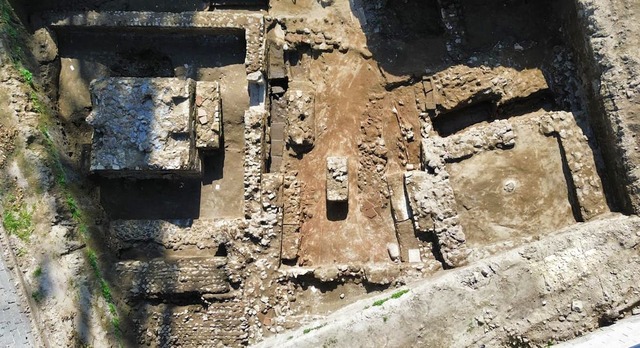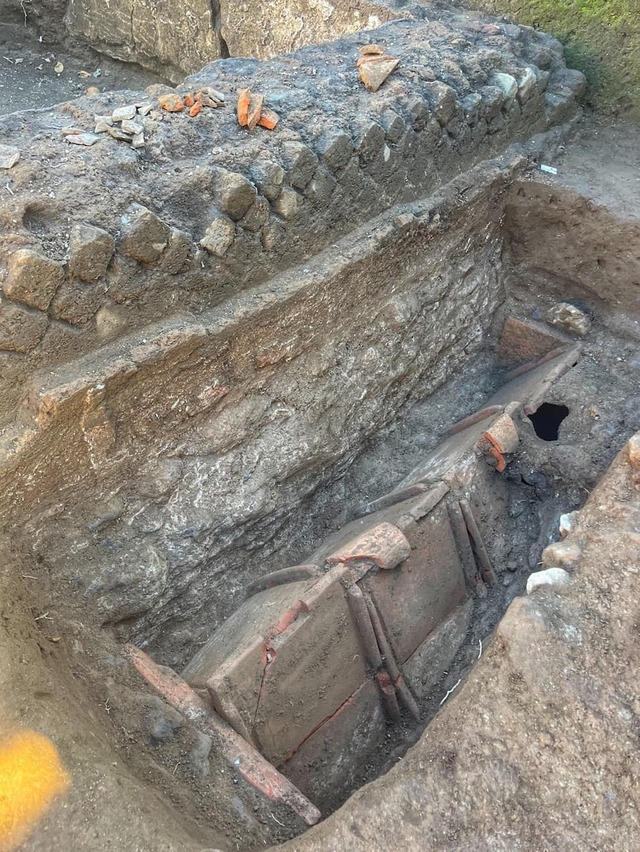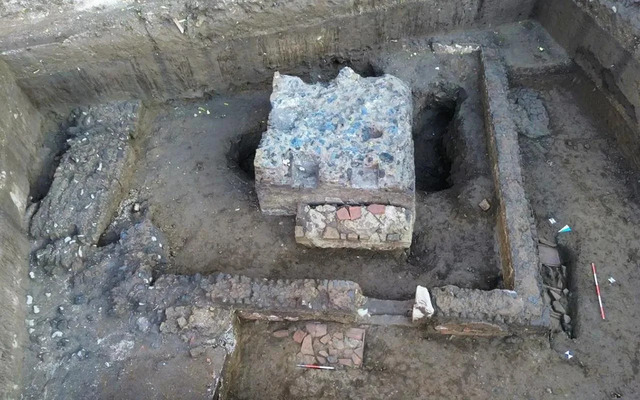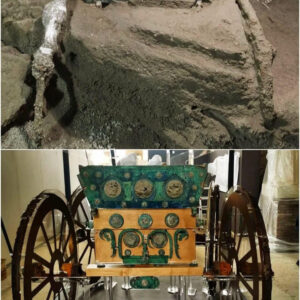In the heart of Italy’s ancient Liternum, a series of remarkable discoveries have brought to light a hidden world of Roman burial practices. Excavations at this historical site have uncovered funerary enclosures, a gladiator’s epitaph, and other treasures that reveal the rich cultural life of a Roman colony. These findings, which date back over 2,000 years, provide invaluable insight into the daily lives, rituals, and societal structures of the time. Join us as we explore the mysteries of Liternum’s necropolis and its connection to the Roman Empire’s fascinating history.
Discovery of Funerary Enclosures
One of the most notable discoveries in Liternum’s necropolis is the revelation of two funerary enclosures, which have been preserved remarkably well despite the passage of time. These enclosures, which once framed the resting places of the dead, were adorned with white plaster walls featuring intricate red detailing. The purpose of these enclosures was not just to mark the graves, but also to define the space for ritualistic and ceremonial activities. Archaeologists uncovered a deep masonry well within the enclosures, which was likely used in cultic rituals, adding a layer of religious significance to the site.

The careful excavation of these enclosures has provided valuable insight into Roman funeral customs. The positioning of the enclosures and the surrounding structures suggests that this area was not merely a place of burial, but a site for community engagement in death rituals, possibly connected to the religious practices surrounding the afterlife. The presence of these ceremonial elements indicates that the Romans in Liternum were deeply invested in honoring their dead with elaborate rituals, which were an integral part of their cultural identity.
Video
Watch the video A Rare Cache of Roman-Era Weapons Found Hidden in a Cave in the Judean Desert to explore this extraordinary archaeological discovery.
Architectural Insights: Mausoleum and Burial Practices
Another striking feature of the Liternum necropolis is the discovery of a quadrangular mausoleum constructed using the opus reticulatum technique. This mausoleum, which measures approximately three meters on each side, features plastered niches in its interior, designed to house cinerary urns. The mausoleum’s use of gray tuff blocks and its highly structured design suggest that it was a place reserved for important figures, possibly members of the elite class, who sought to be remembered in a manner befitting their status.

The variety of burial practices found in Liternum further enriches our understanding of Roman funeral customs. Archaeologists have uncovered over twenty burials, each displaying a different form of interment. Among the discoveries are cappuccino tombs, in which the bodies were covered with roof tiles arranged in a gabled shape, a common burial style used by Romans. Additionally, there were enchytrismos burials, where human remains were placed in large terracotta jars, and box tombs made from brick. These varied burial types reflect the diversity of Roman burial practices and the societal distinctions between different classes within the colony.
In addition to the architectural and burial discoveries, the objects found at the site offer a window into the daily life and culture of the Roman colonists. Coins, oil lamps, and ceramic vessels recovered from the tombs provide valuable clues about the material culture of Liternum. These artifacts not only serve as personal items for the deceased but also act as a testament to the trade, craftsmanship, and social customs that thrived in the colony.
Noteworthy Finds: Gladiator’s Epitaph and Other Artifacts
Among the most captivating discoveries in the necropolis is a well-preserved marble funerary inscription dedicated to a gladiator. This epitaph stands as a rare and poignant reminder of the role of gladiators in Roman society. The inscription reveals that Liternum was home to gladiators who, after their careers in the arena, were honored with a proper burial. This discovery provides an intimate glimpse into the lives of these combatants, who were often viewed as both celebrities and slaves, celebrated for their bravery but also subjected to brutal violence.
The presence of this gladiator’s epitaph in Liternum is especially significant because it highlights the relationship between the gladiatorial games and the communities that supported them. Gladiators were not just fighters in the arena; they were integral members of society, and their legacy was often preserved through epitaphs like the one uncovered in Liternum. The gladiator’s inscription serves as a powerful reminder of the cultural and social complexity of Roman life, where entertainment, politics, and death were deeply intertwined.
In addition to the gladiator’s epitaph, the excavation team uncovered numerous other artifacts that provide further insights into Roman customs. The discovery of oil lamps, coins, and ceramic vessels offers a glimpse into the everyday lives of the people of Liternum. These items were likely used in both religious rituals and daily activities, reflecting the Roman belief in maintaining connections with both the spiritual and material worlds.
Liternum’s Connection to Roman Society

The gladiator’s epitaph and other burial practices in Liternum highlight the colony’s connection to broader Roman societal norms. Gladiators were not just fighters; they were part of the Roman identity, embodying Roman values such as bravery, strength, and endurance. The discovery of their graves in Liternum suggests that the colony was not merely a provincial outpost but an active participant in the social and cultural dynamics of the Roman Empire.
The Roman approach to death and burial, as seen in Liternum, reflects the importance of commemorating individuals and maintaining a connection to the past. The rituals associated with death were central to Roman life, as they reinforced societal structures and allowed communities to honor their ancestors and maintain ties to their history. The discovery of the gladiator’s epitaph in Liternum underscores the importance of these rituals and offers a glimpse into how the Romans used death to solidify their identity.
The Importance of the Via Domitiana in Liternum’s Urban Layout
In addition to its funerary significance, the necropolis in Liternum also provides clues about the urban planning of the colony. The alignment of the burials suggests a possible connection to the ancient Via Domitiana, a major Roman road that connected southern Italy to Rome. This road, which was often used for trade and military purposes, likely passed through Liternum, and the presence of burials along its route indicates that the city was strategically located along this important corridor.
The Via Domitiana was known for its association with Roman burial sites, as the road often served as a location for the interment of prominent figures. The discovery of the necropolis along this route further emphasizes the significance of Liternum as a key settlement within the Roman Empire. Researchers are currently investigating the full extent of the road’s influence on the colony’s development, which may lead to new insights into how Roman cities were organized and connected.
Future Research and Preservation Plans
The ongoing excavations in Liternum promise to yield even more discoveries that will enhance our understanding of this ancient Roman colony. Researchers are continuing to study the recovered artifacts and burial sites, and plans are in place for further excavation work. The team is also examining archival records and historical documents that may provide additional context for the site’s significance.
The Superintendency for the Metropolitan Area of Naples has committed to preserving the necropolis and ensuring that the site remains protected for future generations. This includes efforts to conserve the structures and artifacts found at the site, as well as making them accessible to the public through educational initiatives and exhibitions.
Video
Watch the video Remains of Nine Neanderthals Discovered Near Rome to delve into this groundbreaking archaeological find.
Conclusion: The Unfolding Story of Liternum’s Necropolis
The discoveries made in Liternum’s necropolis are reshaping our understanding of Roman burial practices and the life of its inhabitants. From gladiators’ epitaphs to intricate funerary structures, the site offers a rich tapestry of Roman history, shedding light on the social, cultural, and religious practices of the past. As excavations continue, we can expect to uncover even more insights into this ancient Roman colony, offering a deeper connection to the world of our ancestors. Liternum’s necropolis not only enriches our knowledge of Roman society but also reminds us of the importance of preserving and studying our shared history.



